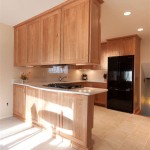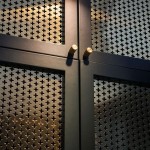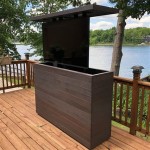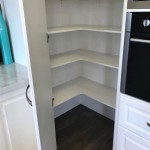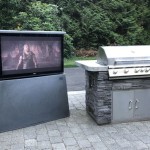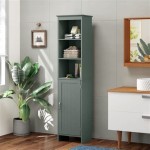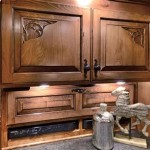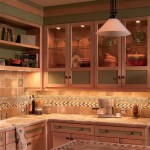How Do You Replace a Mirror on a Medicine Cabinet?
Replacing a medicine cabinet mirror can significantly enhance the bathroom's aesthetics and functionality. This seemingly complex task can be accomplished efficiently with careful planning and execution. This article provides a comprehensive guide for replacing a medicine cabinet mirror, covering various aspects from assessing the damage to securing the new mirror.
Assessing the Damage and Gathering Supplies
Before initiating the replacement process, careful assessment of the existing mirror is crucial. Identifying the extent of the damage, whether it's a minor crack or a complete shatter, will guide the selection of appropriate tools and materials. Inspect the frame for any damage and determine if it requires repair or replacement. This initial evaluation will ensure a smoother and more effective replacement process.
Gathering the necessary supplies beforehand streamlines the replacement process. Essential tools include a putty knife or scraper, safety glasses, gloves, a measuring tape, and a screwdriver. Depending on the method of attachment, adhesive, mirror clips, or mounting brackets might be required. Choosing the correct size and type of mirror is vital. Measure the existing mirror accurately to procure a perfect fit replacement.
Removing the Old Mirror
Taking appropriate safety precautions is paramount when dealing with broken or damaged glass. Wearing safety glasses and gloves protects against potential injuries from sharp edges. Laying down a drop cloth or old newspapers helps contain glass shards and simplifies cleanup.
If the mirror is still intact but needs replacing, using a putty knife or scraper to carefully loosen the adhesive or caulk around the edges is the first step. Applying gentle pressure to avoid further cracking or shattering, slowly pry the mirror away from the frame. If the mirror is broken, carefully remove all of the broken pieces, ensuring all shards are collected and disposed of safely.
For mirrors held in place with clips, unscrewing the clips carefully releases the mirror from the frame. Inspect the clips for damage and replace them if necessary. If the mirror is mounted with brackets, removing the screws holding the brackets in place will detach the mirror. Keep all screws and hardware organized for potential reuse during the installation of the new mirror.
Installing the New Mirror
Thorough preparation of the frame ensures a secure and aesthetically pleasing installation. Clean the frame, removing any residual adhesive, caulk, or broken glass. If the frame is damaged, repair it before installing the new mirror. A smooth and clean surface ensures proper adhesion and prevents the new mirror from sitting unevenly.
Depending on the chosen method of attachment, apply adhesive to the back of the mirror or directly to the frame. Ensure even distribution of the adhesive to provide a secure bond. If using mirror clips, position them correctly on the frame before inserting the mirror. For bracket mounting, pre-drill holes if necessary and secure the brackets with screws before placing the mirror.
Once the mirror is in place, apply gentle pressure to ensure proper adhesion or securement. Allow adequate drying time for the adhesive if used. If using clips, tighten the screws securely without over-tightening, which can crack the mirror. For bracket mounting, double-check that the screws are tightened appropriately, ensuring the mirror is held firmly in place.
Alternative Methods and Considerations
While direct replacement is the most common method, exploring alternative options can offer unique solutions. Custom-cut mirrors can be ordered from glass shops if a standard-sized replacement isn't suitable. This provides flexibility for unusual shapes or sizes and ensures a perfect fit.
Resurfacing the existing mirror is a viable option if the damage is minimal, such as minor scratches or blemishes. Specialized resurfacing kits can restore the mirror's reflective surface without requiring a complete replacement. This cost-effective approach can significantly extend the lifespan of the existing mirror.
Considering the overall style of the bathroom is essential when selecting a new mirror. Various styles, from frameless to ornate, are available to complement different design aesthetics. Choosing a mirror that complements the existing fixtures and decor enhances the bathroom's overall appearance.
Regular cleaning and maintenance of the new mirror will prolong its lifespan and preserve its clarity. Using appropriate glass cleaners and soft cloths prevents scratching or damage to the reflective surface. Avoid abrasive cleaners or harsh chemicals that can etch or dull the mirror over time.

Bathroom Medicine Cabinet Mirror Replacement Doityourself Com Community Forums

How To Install A Mirrored Medicine Cabinet Vanity Light

How To Replace A Medicine Cabinet Mirror Doityourself Com

How To Replace A Broken Bathroom Mirror

Frame Update To Medicine Cabinet Atop Serenity Hill Bathroom Mirrors Diy Mirror

How To Replace A Bathroom Mirror Medicine Cabinet Featured Finehomesandliving Com

Updating A Brass Medicine Cabinet Flashback Friday The Kim Six Fix

Poor Man S Diy Bathroom Renovation Part 3 Medicine Cabinet Mirror

Replace Mirror In Medicine Cabinet With Artwork Stay At Home Ista Art The Stylish Bathroom Trendy Diy Storage

Easily Replace An Old Medicine Cabinet Wg Wood S
Related Posts

